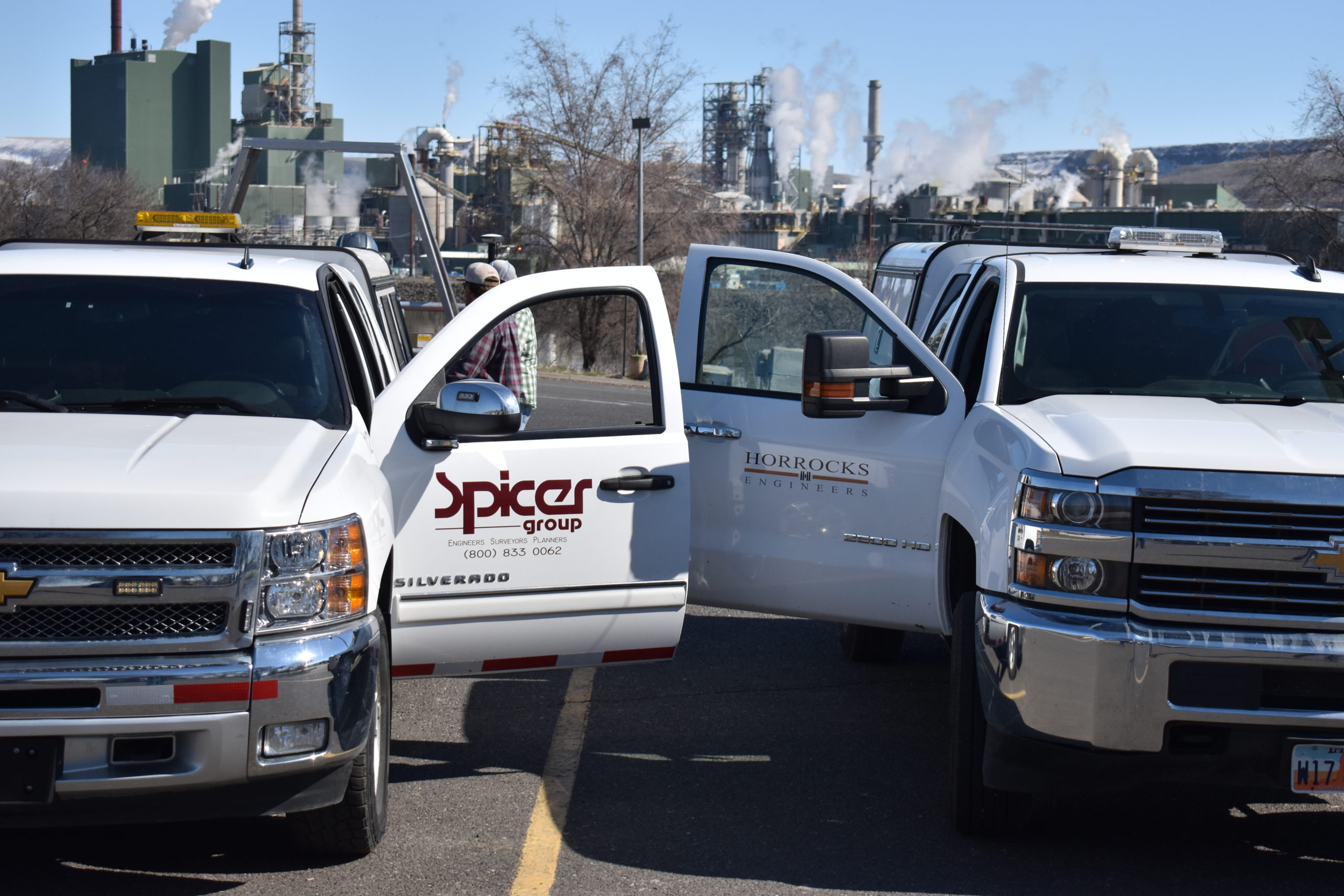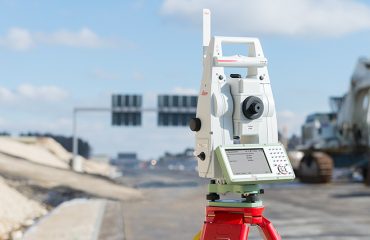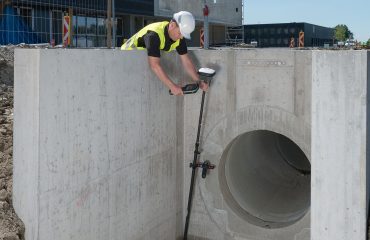Having the right people and equipment is imperative to a successful surveying project. But what do you do when you encounter a project that requires a little more than what you can offer? Sometimes partnering with another organization is simply the best way to get the job done correctly and on time.
Horrocks Engineers’ Lonnie Olson and Spicer Group’s Nathan Shepherd recently reflected on their team-up on a mobile mapping job for the Idaho Department of Transportation. Here’s what they identified as three essential elements of a successful partnership.
1. Complementary Expertise
“Being the prime,” said Olson, “I recommend doing the research. I wasn’t looking for the cheapest guy. I looked into the jobs they’d done, and then talked to Leica Geosystems about their experience.” In Spicer’s case, Shepherd was able to provide a case study showing an almost identical job of scanning a bridge from river bottom to bridge top, which made Olson comfortable from the start.
Plus, they spoke on the phone, and Olson made sure they spoke the same language. “You can tell when a surveyor knows what he’s talking about,” Olson said. “For this type of survey, if someone said, ‘Can you do a boundary?,” I’d say I wasn’t interested. Once you throw out a couple of keywords, you know whether it will be an easy company to work with.”
“Make sure you scope the job fully ahead of time and that both sides understand what’s needed for deliverables and the scope of the work as a whole so there are no surprises.”
– ShepherdShepherd said it was also important that both firms had a long history working with departments of transportation. For example, DoTs tend to have very stringent control guidelines, with control set at a certain increment and a requirement for validation points that can be used after the data has been constrained to the control.
“Having both teams experienced in what they’re doing,” said Shepherd, “we both understood what the expectations of the DoT were; we know the end product. We did zero vectorization, just the point cloud, but we know how to collect the data because we know what they need in the end game to deliver. A potential partner might have experience with scanning, but if it’s not for that type of client, you might have a tough time articulating why things need to be done a certain way. Both of us having a strong background in DoT work was definitely beneficial.”
2. Strong Expectation Management
Once you’ve agreed to work together, the next step is strong expectation management. “Lonnie was pretty good at articulating what he needed,” said Shepherd. “And we had just done a nearly identical job, so we were able to tip him off on some of the issues that we had encountered.”
While no one likes meetings, a project kick-off meeting with all of the stakeholders from both sides can set everything up for success. “Make sure you scope the job fully ahead of time,” said Shepherd. “Make sure both sides understand what’s needed for deliverables and the scope of the work as a whole so there are no surprises. Well, fewer surprises anyway.”
3. Clear Communication—and the Ability to Adjust on the Fly
Sometimes, unexpected things just come up: In scanning on the Clearwater River, the Spicer team set control with the water level much lower than it ended up being when they did their scanning, leaving their targets submerged and invisible to the above-waterline scanner. However, given strong communication ahead of time, and relatively smooth operations otherwise, they were able to tie the data in conventionally without too much headache.
But that’s one lesson learned for the future, laughed Shepherd: “Make sure you know what the normal water level is before you place your targets!”
To learn more about how to maximize opportunities in your surveying business, please contact us.




